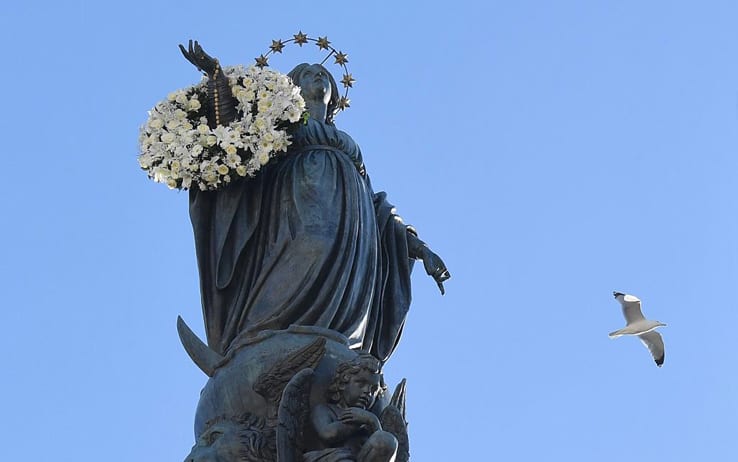Immaculate Conception: December 8 which officially opens the Christmas holidays. After the classic novenary in all Catholic churches this important liturgical feast is celebrated which in Rome is characterized by the Pontiff's homage to the stele of the Virgin in Piazza Mignanelli, close to Piazza di Spagna. As has been the case since 1953, the Pope goes to the historic square every year in the afternoon. The Bishop of Roma he is welcomed by ecclesiastical and civil authorities and by the crowd of the faithful. After a moment of reflection and prayer, the Holy Father lays a wreath of flowers at the foot of the stele.
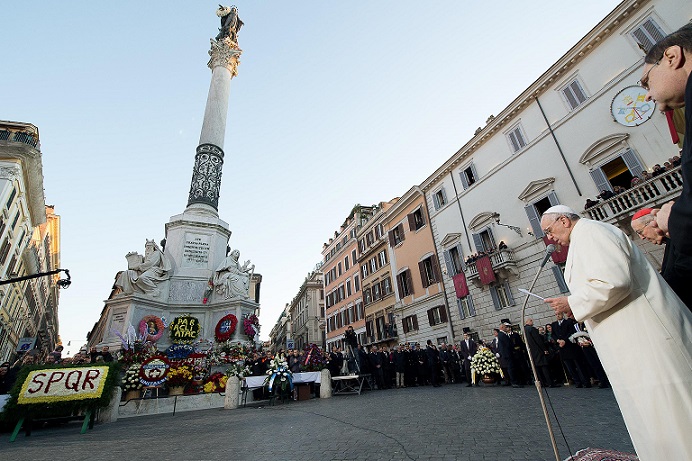
The Immaculate Conception of Rome
On the occasion of the festival, throughout the day the Romans pay their homage to the statue of the Immaculate Conception in Piazza Mignanelli. As is now tradition, the first are the firefighters, in honor of the 220 colleagues who inaugurated the monument on 8 December 1857. Each year a firefighter climbs to the top to place his flower wreath on the arm of the Virgin.

The Franciscans of the basilica of the Santi XII Apostoli animate the day. Among other things, the oldest novena to the Immaculate Conception of Rome is held in the church in the historic center. On the morning of December 8 in the church of the Santissima Trinità dei Monti, a mass is celebrated dedicated to the world of work and lay aggregations. The procession of the participants follows to Piazza Mignanelli, for the floral tribute to the Virgin. This too is another inveterate tradition that is repeated regularly every year.
The Dogma
The first to introduce the liturgical feast of the Immaculate Conception was Pope Sixtus IV who, however, did not pronounce himself on dogma. Subsequently in 1661 Pope Alexander VII issued the bull called "Sollicitudo", with which he expressed himself in favor ofImmaculate Conception. In 1708 Clement XI made the liturgical feast universal. In 1854 Pius IX proclaimed the dogma of the Immaculate Conception with a bubble called “Ineffable Deus”. The dogma refers to original sin and should not be confused with Mary's conception of Jesus.
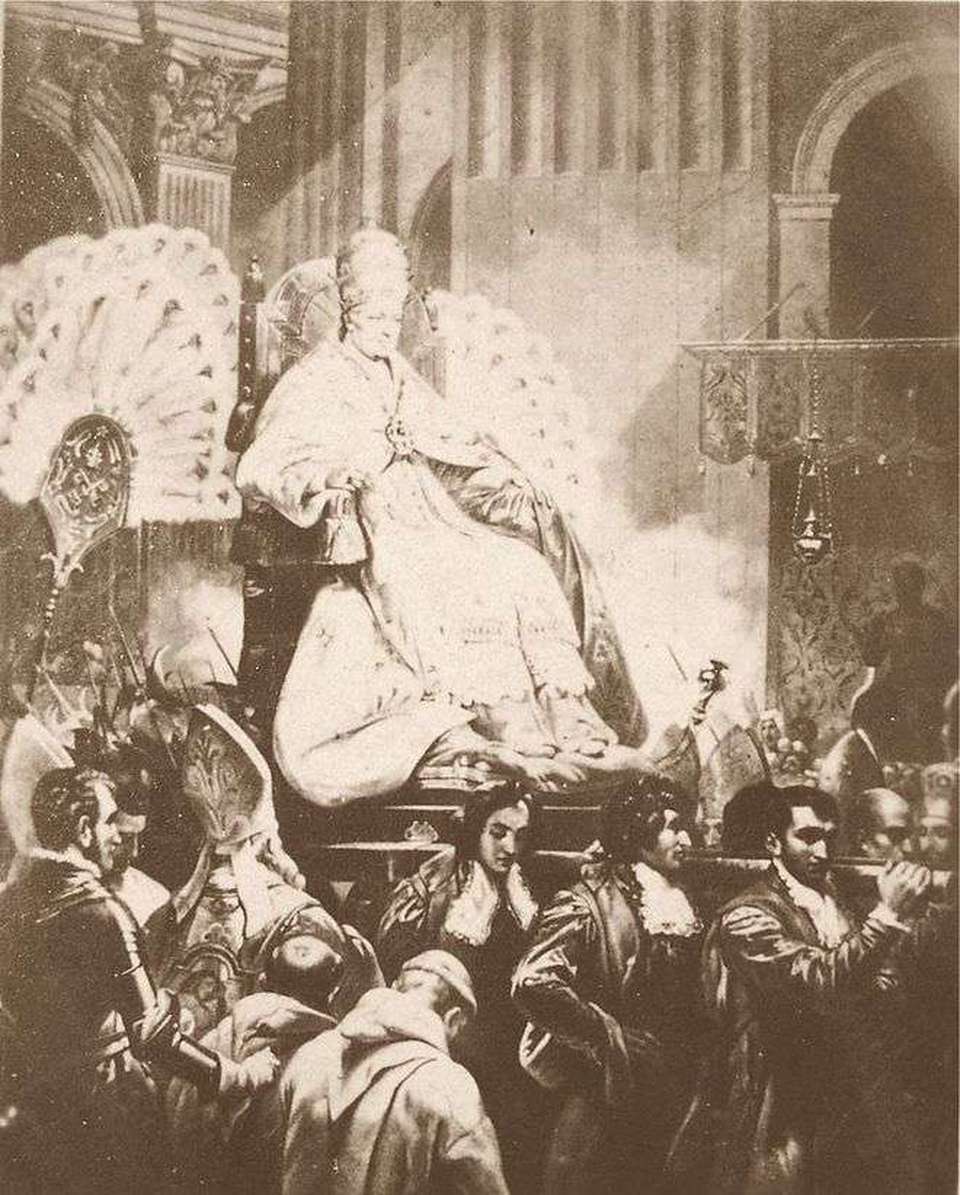
Pius IX in the Apostolic Constitution Ineffabilis Deus wrote: "We declare, affirm and define the doctrine which holds that the most blessed Virgin Mary in the first instant of her conception, through a singular grace and privilege of almighty God, in anticipation of the merits of Jesus Christ, the Savior of mankind, it has been preserved intact from every stain of original sin, and this must therefore be an object of certain and immutable faith for all the faithful ”.
The sacred image
Even before the institution of dogma, art and theological reflection had devoted great attention to Mary "tota pulchra", without blemish. The Fathers of the Church they approached Eve and Mary to emphasize that the Virgin was conceived without sin. Over time, the assumption "Semper Virgo of the genitrix Inmaculata " it had been embraced by an ever increasing number of faithful and defended by the popes. The path of the Church, crowned by the dogmatic definition of Pius IX, is fully reflected in the path of art. The pictorial theme of the Immaculate Conception finds particular diffusion in southern Italy and in Spain.
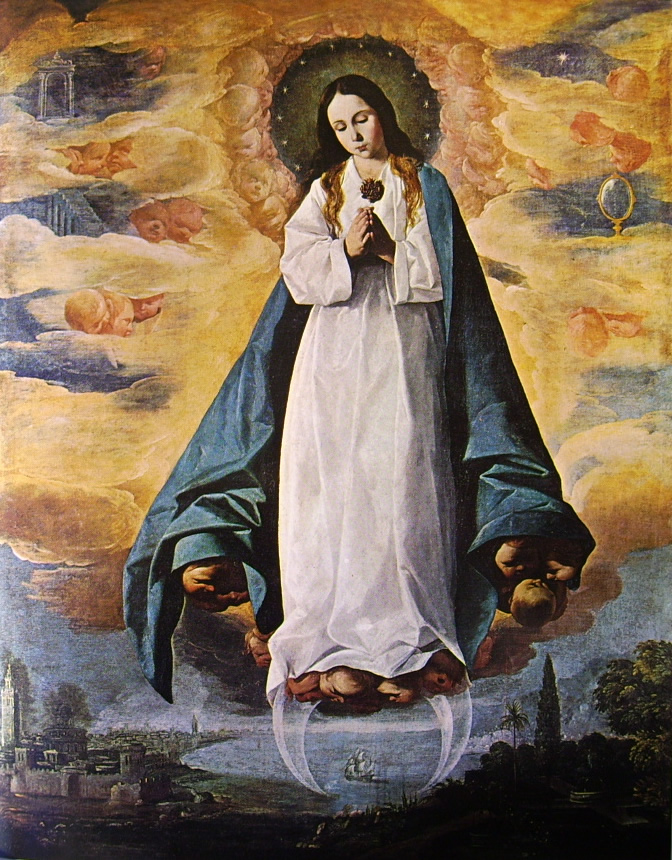
The Spaniard Francisco Pacheco himself, in his treatise Art de la Pintura of 1638 he elaborated a guide to correctly represent the Immaculate Conception. "This Lady must be painted in the prime of her age, twelve to thirteen years old, beautiful little girl with beautiful eyes and grave look, very perfect nose and mouth and rosy cheeks, beautiful straight hair, gold color. He must paint himself with a white robe and a blue cloak dressed in the sun, an ocher and white oval sun, which surrounds the whole image, crowned with twelve stars. An imperial crown must adorn his head but that it does not cover the stars; under the feet, the moon. Adorn yourself with seraphs and whole angels ". These are some of the normative indications of the Pacheco that the artists have always taken up in representing the Virgin Mary.
Mary, woman of the Magnificat
The liturgy of 8 December proposes the Magnificat, the canticle of the Gospel with which Mary thanks God. Don Tonino Bello, bishop of Molfetta, for which the Congregation of the cause of Saints he initiated the process of beatification, he revisited the Magnificat in a sociological key.
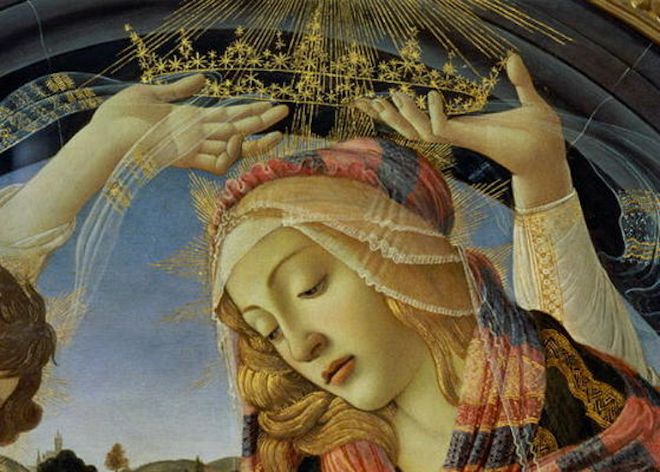
In his book "Mary woman of our day", Don Tonino Bello writes: “Maria was not neutral. It is enough to read the Magnificat to realize that Maria took sidesa - underlines the bishop of Molfetta - He took a stand on the side of the poor, humiliated and offended of all times. Gods discriminated against by human wickedness and those excluded from the force of destiny. In short, of all those who count for nothing before the eyes of history ”.

